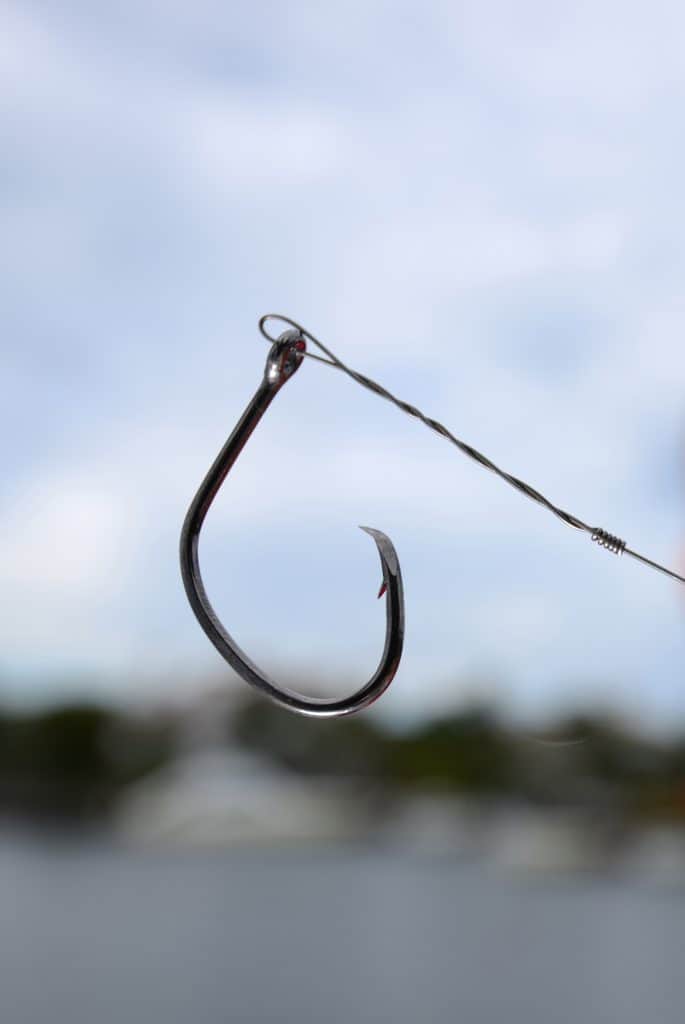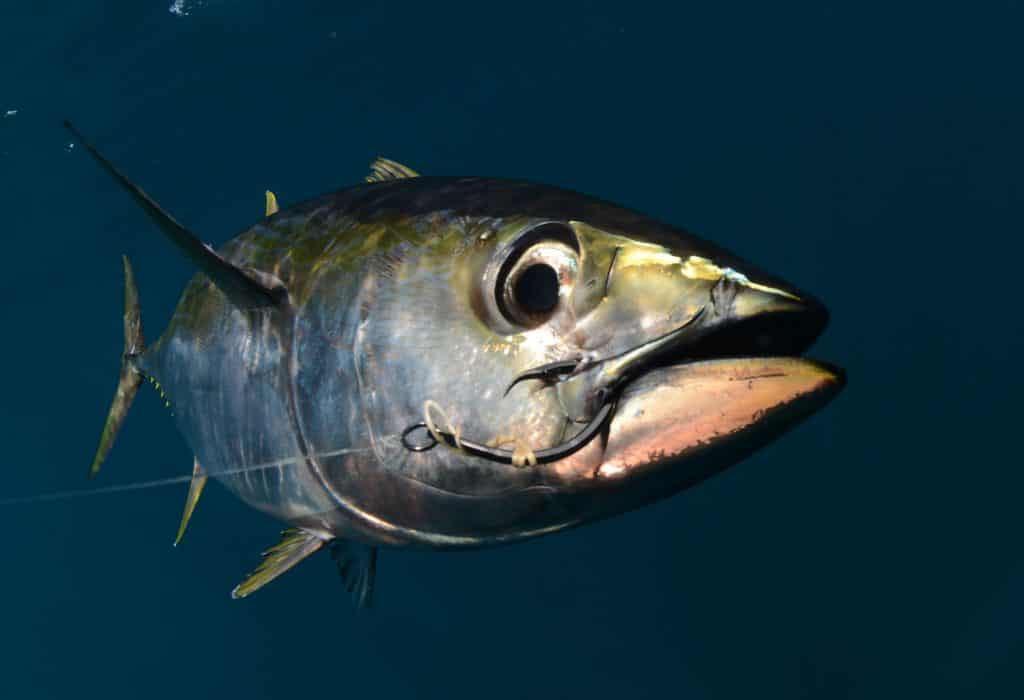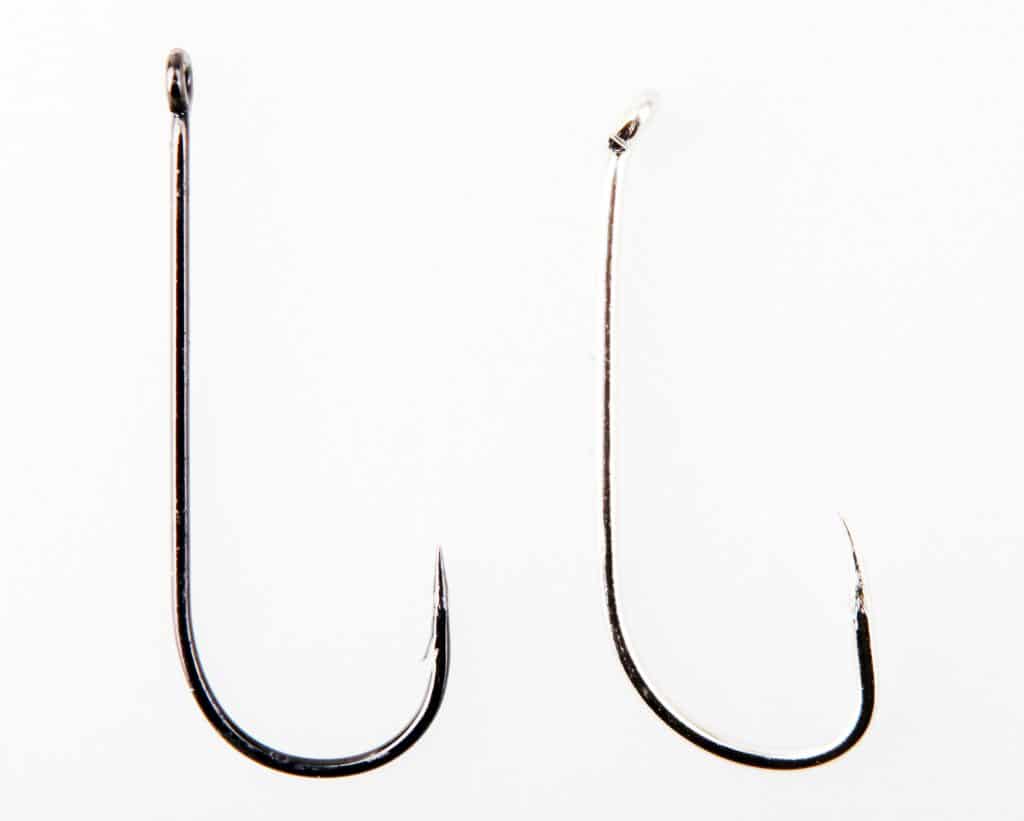Humane fish hooks are a vital piece of gear. This article will not address fishing hooks 101, but the importance of using those that greatly minimize the chances of hurting fish.
A hook wound could seem minor to the fisher but it can badly damage the eye, gills, and internal organs. This can end up being fatal.

What are Humane Fish Hooks?
Humane fishing hooks are those that have been designed to release fish quickly, easily, and humanely without harming them. They exist in different types. Most fishers use small aesthetic barbs that can numb the mouths of fish to slightly ease the pain.
Manufacturers are now designing hooks that can dissolve in water after a few days. If the hook remains in after the line breaks, fish won’t have to go through slow and painful deaths. Before the Covid19 pandemic that struck the whole world, fishing efforts had dramatically increased. The forecasts too were promising in the industry.
Managers of fisheries use traditional regulations and state rules to control fish harvests and protect stocks. Apart from maximum and minimum sizes, bag limits, closed areas, and seasons, some have regulations on the types of hooks to use.
Overall, the fate of fish caught on hooks and lines that are later released into the water is greatly dependent on the dexterity and expertise of the fisherman/woman. If all fishers practiced sustainable and honestly often intuitive and straightforward techniques that would largely increase the survival rates of fish that has been caught and released back into the water.

Why Some Hooks are a Cause of Death in Fish
While fish can die for various reasons, the commonest is psychological stress from struggling during capture and the injuries resulting from the hook. Fish that intensely struggle for long during capturing are very stressed and exhausted because of lactic acid accumulation in excessive amounts in the blood and muscles.
This severe exhaustion will cause muscle failure, physiological imbalance, or death. Hence, use the right tackle and hooks, land the fish very fast, take a few shots for your gallery, and if possible, you should leave it in the water as you release it. The fish will need plenty of oxygen for recovery.
If you hook a fish deeper in its gut or throat, cut your leader near the hook. Leave the hook inside the fish as any prolonged attempts to remove it will do harm it more. Fish can reject, expel, or encapsulate the hooks you cut at the leader and leave inside them.
Through encapsulation, the healing process in fish will cause the hook to get a covering of acellular tissue or calcified material. Bronze and steel hooks are not as toxic and will be rejected or can dissolve faster than cadmium plated, nickel-plated, or stainless steel hooks.
Humane Fish Hooks to go for
Circle and barbless hooks are recommended for reducing injuries and the mortality of caught and released fish. Barbless hooks are known for reducing handling stress and tissue damage as they can be easily and quickly removed. They were a popular thing for trout fisheries, freshwater fishermen/women but saltwater lovers are considering it more.
If you don’t have any barbless hooks with you, use a pair of pliers to remove or crimp barbs from your regular hooks.
Circle hooks are compared to J hooks which are a regular type of hook. Circle hooks showed higher results in lowering hooking mortality rates in all fisheries except the flounder and flatfish fishery. However, they are tedious if you haven’t mastered how to use them. Especially if you are using live bait. Non-offset circle hooks have proven to be more reliable.
- EUPHENG PLUS BEST COLLECTION: Fly Fishing Barbless Competition Hooks, Dry, Wet, Nymph, Shrimp & Pupa fly hook, Pupa fly hook, Jig fly hooks of straight and circle points, Catch & Release in mind design, 100 pcs Pack.
- PRO DESIGN, PREMIUM MATERIAL AND MAUNFACTURE TECH: Made of best quality high carbon steel wire specially designed for fishing hooks. Chemically-sharpened, super sharp and super strong. Professional fish men wide hook gap design allows for more aggressive hook set and increase the chance of landing the catch. Barbless long point allows deeper penetration, keeping the fish firmly planted when it tries to make the escaping strikes.
- CORROSION RESISTANT FINISH: Black nickel plated, durable and corrosion-resistant, whether fishing in freshwater or saltwater.
- MORE INFO: 1. Dry fly hook, EP-9214, down eye, standard fine, wide gape, forged, sizes 10# to 18#. 2. Wet fly hook, EP-9221, down eye, 2X strong wire, 1X short length, sproat bend, sizes 8# to 16#. 3. Nymph fly hook, EP-9231, down eye, 1X strong wire, 2X long, round bend, forged, sizes 6# to 16#. 4. Shrimp & Pupa fly hook, EP-9251, down Eye, 1X strong wire, 2X short length, reversed bend, forged, sizes 8# to 16#.
- 5. Pupa fly hook EP-9254, up eye, fine wire, 2X short length, reversed bend, forged, sizes 10# to18#. 6. Jig fly hook straight point, EP-9220, round bend, jig eye, standard length, standard wire, sizes 8# to 16#. 7. Jig fly hook circle point, EP-9230, round bend, jig eye, chemically sharpened circle points, standard length, sizes 10# to 18#. 8.EP-9252 Czech Nymph hook,Down Eye, Standard Fine, Wide Gape, Curved Shank, Claw point, Wide Gape, Forged, Black nickel finish.
Is it Possible to Fish without Hurting the Fish?
No fisherman or researcher knows this unless more is done to come up with the safest method to fish without causing any harm to fish. However, the fisher can practice some intuitive techniques and dexterity to ensure that they minimize the chances of harming fish. Apart from choosing the right tackle, going for barbless hooks and non-offset circle hooks will play a major role here.
Be careful not to play the fish for a long time as it reduces its chances of survival. Land that guy very fast and place him back into the water gently with the right side facing up. Wiggle it slowly back and forth and wait until it can swim off. Avoid tossing it back hoping it recovers.
Keep them in water always. If you have to take them out, it should be for the shortest time possible. Exposing the gills out to air for a long time is more detrimental than the damage caused by hooks. Whether you are planning to keep or release the fish, use barbless hooks are they cause slightly less pain.

Humane Fish Hooks – Conclusion
Using humane fish hooks isn’t only for catch and release. In case of line breakage, the fish will have higher chances of removing the humane hook and live as before. Removing these hooks consumes less time. Unhooking fish caught with barbless or circle hooks is gentler as nothing can get stuck or cut you or the fish.
Remember, the quicker you release a fish, the higher its recovery and survival chances. Some fish species can be uncooperative. Using humane hooks makes removal easier. Most fisheries have banned the use of barbed hooks because of their negative environmental impact.
Humane fish hooks are also for the fisherman’s safety. It is easy to remove a barbless hook if it gets stuck in your hand. You could also catch the next fisher with the hook accidentally. However, you might not care as much as you would if it was a barbed one. Care for them because fish too feel pain and make sure to make humane fish hooks part of your tackle box!
